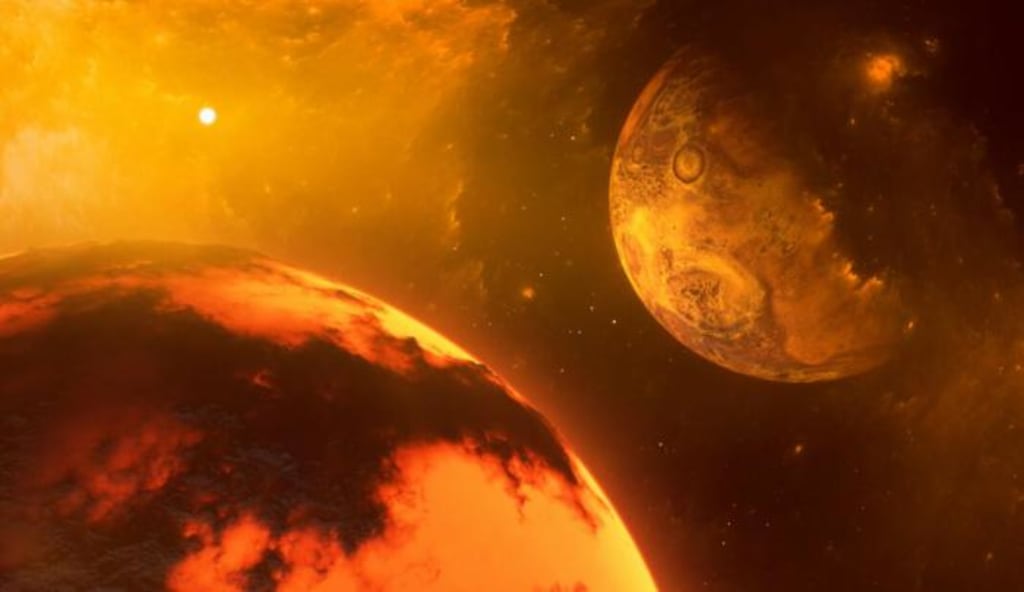Incredible! The moon may have formed in just a few hours.
New Study Shows

Among the many natural moons in our solar system, the Moon appears to be quite different, with a mass of about 1 in 81 of the Earth and a diameter of about 27% of the Earth. A natural moon like the Moon is too large for a rocky planet like Earth, and this strongly suggests that the Moon probably has a distinctive origin.
In the past, people have put forward various hypotheses about the origin of the Moon, and one of them, known as the "big impact hypothesis", has finally won the general agreement of the scientific community. This hypothesis suggests that the Moon was formed about 4.5 billion years ago in a "big impact event", in which a planet about the size of Mars struck the Earth.
The planet was called Thea, and after its violent impact with the Earth, most of the material that made it up was swallowed by the Earth, while some of the "debris" from the impact was bound by the Earth's gravity while orbiting the Earth and accrediting to each other. The moon was eventually formed by accretion.
The question is, how long did it take for the moon to form during the above process? Normally we would assume that it would take a long time to form an object the size of the moon, and indeed astronomers generally agree that it would take at least several thousand years.
However, a team of researchers from Durham University has come up with an incredible answer. on October 4, 2022, the team published a paper in the Astrophysical Journal Letters saying that their new research suggests that the moon may have formed in just a few hours.
The research work can be summarized simply by using supercomputers to simulate "big impact events" by performing high-precision simulations of collisions at different angles, rotations, and speeds, and finding the one that best fits the actual situation.
The researchers said that if you use toy blocks to construct a model car to simulate what might happen in a collision, then if you use only a few dozen blocks, the model will easily break from the joint between the blocks, which will be very different from the actual situation, but in building the same size model car, if you use the number of blocks is tens of thousands, then the simulated situation will be much closer to the real situation. much closer to the real situation.
In general, the "blocks" used in simulating celestial impacts are only 100 to 1 million, but to make the simulated "big impact event" closer to the real situation, this study used up to 100 million "blocks", which certainly makes the simulation of the "big impact event". blocks", which undoubtedly makes the simulation process extremely complex.
That's why the researchers used the university's supercomputer, Cosmology Machine (COSMA), and after numerous simulations, the researchers found the one that best fits the real situation, as follows.
After the impact, "Thea" was almost smashed to pieces, and the Earth was also hit hard, in the violent impact, a large amount of material was thrown out, but the material did not splash around, but quickly concentrated in two areas, for the convenience of description For the sake of description, we may call the region with more material "region 1" and the other "region 2".
The mass of "region 1" is relatively large, and its gravitational force should not be underestimated, we can see that, due to the relative motion of "region 1" and gravitational effect, the motion of "region 2" The trajectory and speed of the "region 2" have changed significantly, it looks like the "region 1" directly "thrown" out.
This can be seen as a strong gravitational boost, after "region 2" "thrown" out, "region 1" can not get out of the Earth's gravitational control, it soon It was quickly recaptured by the Earth, while "region 2", with the help of "region 1", had a high enough speed and successfully entered the orbit around the Earth.
In the following time, most of the remaining material in space near the Earth fell into the Earth along a spiral curve, while the material in "region 2" soon reached hydro static equilibrium and a new planet was formed. Yes, this planet is the moon we see now, and according to supercomputer simulations, this process took only a few hours.
According to this, we can see that the reason for the incredibly short formation time of the Moon is that the Moon was formed directly during the "big impact event", and did not undergo the slow and gradual accretion process as previously speculated. Of course, this is only a speculation, for us humans, the moon still exists a lot of mysteries waiting for us to explore.
Well, that's all for today, welcome to follow us and we'll see you next time.
About the Creator
Carlo Phil
Science and art are two sides of a coin
Enjoyed the story? Support the Creator.
Subscribe for free to receive all their stories in your feed. You could also pledge your support or give them a one-off tip, letting them know you appreciate their work.






Comments
There are no comments for this story
Be the first to respond and start the conversation.